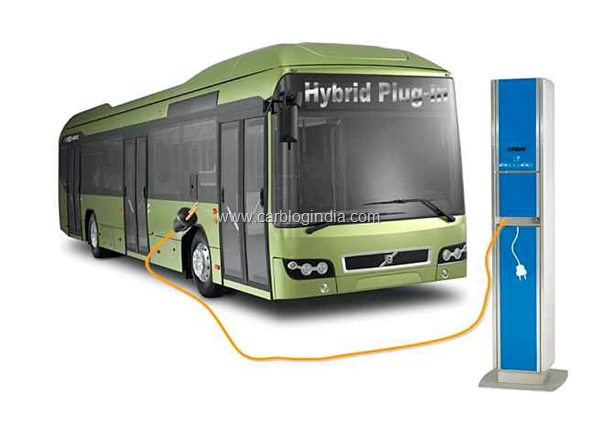Volvo is developing a plug-in Hybrid Bus for long distance commuting using electric power from Batteries. Such buses can travel long distances without leaving any exhaust fumes whatsoever. Three buses will be tested in Gothenburg, Sweden, supported by the European Union.
Volvo currently has the world’s most efficient hybrid solution for buses and trucks. Volvo Buses has sold more than 250 hybrid buses globally, which are reducing fuel consumption by up to 35% and thus also reducing energy consumption and carbon-dioxide emissions by an equal amount.
Supported by authorities including the Swedish Energy Agency, Volvo is developing a plug-in hybrid bus. It is essentially the same Volvo hybrid bus as today, where the brake energy is recycled and utilized by the electric motor. But, with a new type of battery and charging equipment it will also be possible to charge the battery via the electricity network.
The concept is based on placing battery charging stations at the end stations of the bus lines. By charging the battery there for five to ten minutes, it could significantly extend the time that the bus is able to operate only on electricity.
This could entail distances of up to ten kilometers, with the corresponding advantages in the form of silent traffic with no local emissions. It can be controlled so that the bus operates on electricity in densely populated areas or in particularly sensitive environmental areas, while the diesel engine can be used on other parts of the route. This technology will generate considerable opportunities to significantly reduce energy consumption. The reason is that electric engines have very high efficiency.
Volvo Buses expects to have a prototype bus ready for testing in 2011. The next step will be taken in autumn 2012, when a field test will commence in Gothenburg using three chargeable hybrid buses. The field test will commence in autumn 2012, but Volvo Buses does not know yet when the company will be able to offer this bus in the market.
These buses are expected to be quite expansive considering from Indian public transport authorities point of view and may take some more years before such technologies can be adopted and used in India as it required some infrastructural developments at the bus stations or bus terminals to provide for charging station and electricity needed to charge these buses. We hope such silent and environment friendly buses do make their way to Indian roads some day in the coming decade.
check out more-


